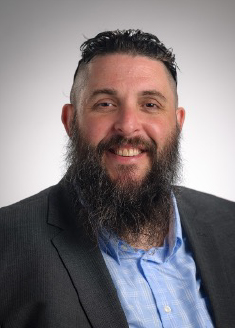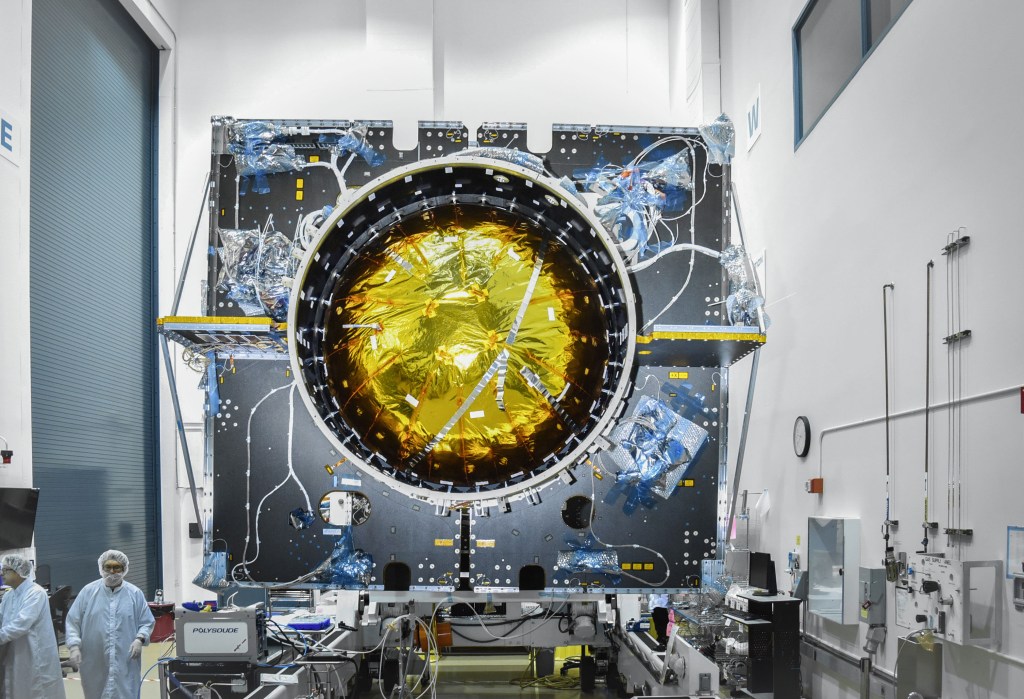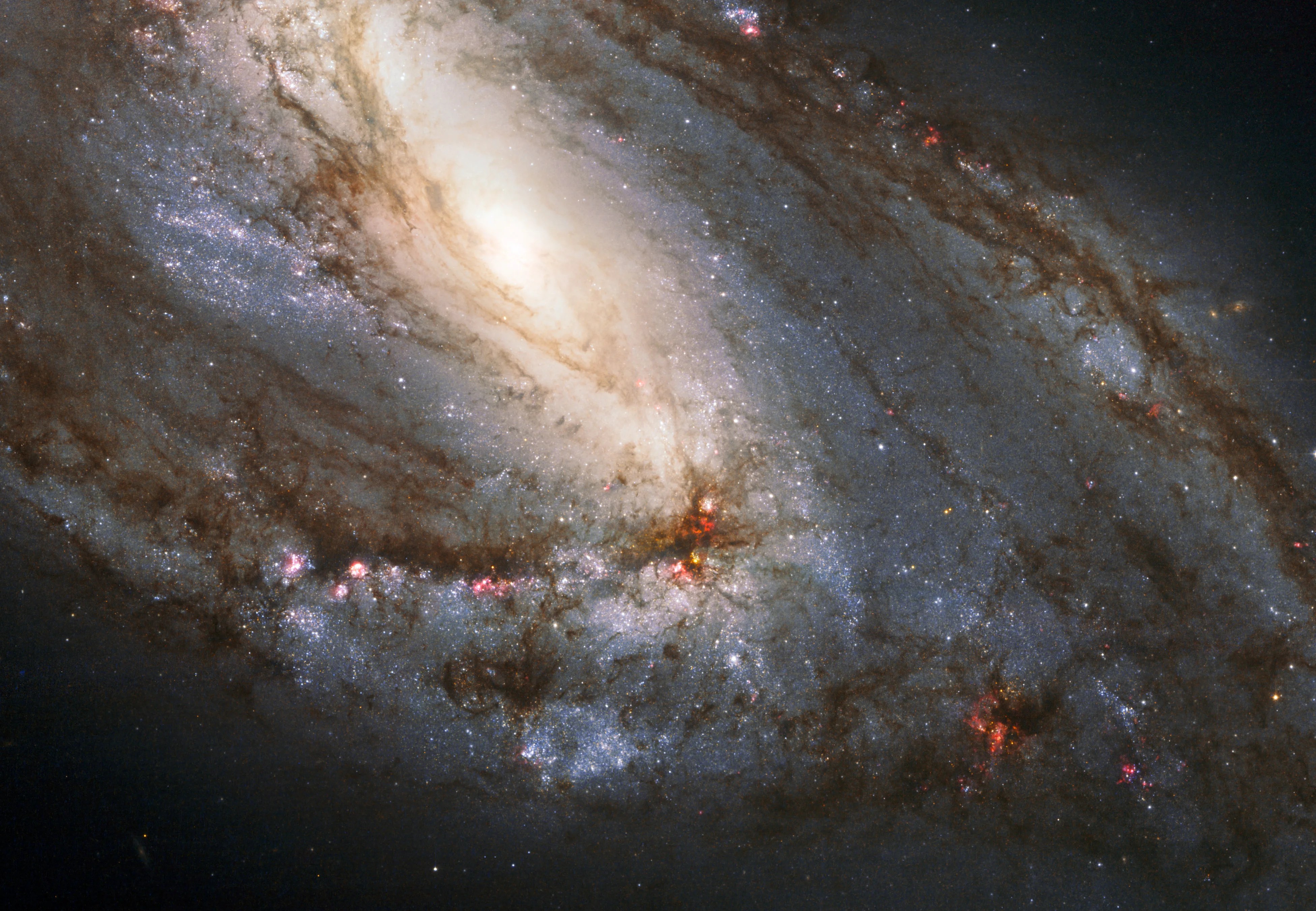
Ryan T. Scott
Science Lead; Physiological-Phenotypic-Telemetry-Bioimaging-Behavioral data; NASA Open Science Data Repository
Phone: (650) 316-9901
Email: Ryan.T.Scott@nasa.gov
Affiliation: KBR; Space Biosciences Research Branch
Professional Background
Biography
Ryan T. Scott is a scientist with KBR and serves as the Science Lead for the NASA Ames Life Sciences Data Archive (ALSDA), which integrated with NASA GeneLab to form the NASA Open Science Data Repository. The overall goal of the work is to enable multi-modal and multi-hierarchical fundamental and space health life science data (phenotypic-physiological-behavioral-environmental telemetry; tabular, text, code, images, video; raw, processed, transformed, labeled) be reused toward basic science, applied science, and operational outcomes for space exploration and knowledge discovery. The reuse and accessibility to life science-relevant data by mission planners, engineers, and scientists is essential in enabling life to thrive in deep space (humans, ecosystems, plants-crops, microbial life, etc.). The scientific metadata and data standards for physiological-phenotypic-bioimaging-behavioral-telemetry data reuse is provided through feedback from the Open Science ALSDA Analysis Working Group (AWG). As chair, Ryan initiated the ALSDA AWG in mid-2021, which has grown to 240 NASA Principal Investigators, scientists, clinicians, students, and other subject matter experts. They provide feedback on the standards for ingress and egress of data, as well as collaborate to reuse OSDR data, which often leads to collaborative publications. Ryan also is involved in the guidance and mentorship of various students and individuals contributing to space life sciences research, the NASA Open Science Data Repository, and in Citizen Science efforts such as the AWG-connected Space Open Life Science Team for International Collaborative Exploration (SOLSTICE).
Ryan earned his master’s degree in Kinesiology/Exercise Physiology from San José State University, conducting his thesis research on Bone Biology at NASA Ames Research Center. He received the 2022 NASA Ames Honor Award in the contractor category and was recognized as 2017 Young Investigator of the Year by the American Society for Bone and Mineral Research. He has authored articles in peer-reviewed scientific journals including in Cell, Cell Reports, Nature Methods, and Nature Machine Intelligence. In 2023, two articles he co-first authored in Nature Machine Intelligence were selected by Nature for a special collection of articles on robotics and artificial intelligence sponsored by the Future Investment Initiatives Institute. Ryan has been a Co-Investigator on three successfully awarded grants one each from: NASA Space Biology Program, NASA Human Research Program, and the NASA Science Mission Directorate (Open-Source Science Initiative/Transform to Open Science). Ryan has given oral and/or poster presentations at the following scientific meetings: American Society for Gravitational Space Research, NASA Human Research Program’s Investigators Workshop, American Society for Bone and Mineral Research, Society for the Study of Reproduction, International Society for Biological and Environmental Repositories, From Images to Knowledge, and the American Geophysical Union.
Ryan was a Support Scientist part of the NASA Rodent Research team from 2017-2018. He also was involved in spaceflight Female Reproductive and Endocrinology research at NASA Ames and presented the research publicly. He was the Project Scientist for 2 years for what became the NASA Biological Institutional Scientific Collection. At San José State University he taught Human Anatomy in the Department of Biological Sciences for ~5 years reaching over 1000 students from 2014-2019. Four years in a row, Ryan organized a yearly summer visit for NASA Scientists and NASA summer interns to the San José State University’s Human Anatomy and Cadaver Lab. From 2015-2020, Ryan was a volunteer speaker through the NASA Speakers Bureau at a ~12 events, reaching several hundred people spanning a retirement center, elementary school, high school, various universities, and notably twice at the Chabot Space & Science Center.
Awards and Activities
- 2022: NASA Ames Honor Award
- Contractor category. For transformation of Ames Life Sciences Data Archive and its integration with NASA GeneLab into the NASA Open Science Data Repository; public outreach; research excellence.
- 2018: NASA Group Achievement Award
- Rodent Research Project Team. For completing four experiments aboard the International Space Station in one year.
- 2017: American Society for Bone and Mineral Research “Young Investigator of the Year”
- Award presented at Annual Meeting, Denver, CO, on simulated spaceflight and bisphosphonate rodent experiment conducted as part of the NASA Ames Bone & Signaling Laboratory.
- 2017: California State University Student Research Competition
- Winner of 2nd Place Statewide: Graduate Division of Biological and Agricultural Sciences for NASA space Bone Biology experiment.
- 2016: San José State University Student Research Competition
- Selected as a winner after Oral Presentation to Faculty Panel. Title of presentation: “Zoledronate Prevents Simulated Weightlessness-Induced Bone Loss In The Cancellous Compartment While Blunting The Efficacy Of A Mechanical Loading Countermeasure.” A component of the research was Master’s Thesis, which separately was nominated as San Jose ‘Outstanding Thesis’ for 2017.
- 2015: California State University Pre-Doctoral Sally Casanova Scholarship
- Support for graduate research at NASA Ames, San José State University, and entry into doctoral granting institutions.
Education
2016: M.A. Kinesiology, San José State University, Exercise Physiology concentration
2013: B.S. Kinesiology, California State University Monterey Bay, Exercise Science concentration
Links to Professional Profiles
Selected Publications and White Papers
- Walsh, S., et al., Cosmic Kidney Disease: The Effects of Spaceflight and Galactic Cosmic Radiation on Renal Structure and Function. ResearchSquare preprint. (2023). https://doi.org/10.21203/rs.3.rs-2982830/v1
- Mason, C., et al., Viral activation and ecological restructuring characterize a microbiome axis of spaceflight-associated immune activation. ResearchSquare preprint. (2023). https://doi.org/10.21203/rs.3.rs-2493867/v1
- Li, K., Desai, R., Scott, R.T., et al., Explainable machine learning identifies multi-omics signatures of muscle response to spaceflight in mice. arXiv preprint. (2023). https://doi.org/10.48550/arXiv.2309.15888
- Schmied, C., et al., Community-developed checklists for publishing images and image analyses. Nature Methods. (2023). https://doi.org/10.1038/s41592-023-01987-9
- Sandhu, S., et al., Development of an adverse outcome pathway for deposition of energy leading to bone loss. Authorea preprint. (2023). https://doi.org/10.22541/au.168415785.53822751/v1
- Sanders, L. M., Scott, R. T., et al., Biological research and self-driving labs in deep space supported by artificial intelligence. Nature Machine Intelligence, 5, 208-219. (2023). https://rdcu.be/c8jSS
- Scott, R. T., Sanders, L. M., et al., Biomonitoring and precision health in deep space supported by artificial intelligence. Nature Machine Intelligence, 5, 196-207. (2023). https://rdcu.be/c8jSO
- Casaletto, J., Scott, R. T., et al., Analyzing the Relationship Between Gene Expression and Phenotype in Space-Flown Mice Using a Causal Inference Machine Learning Ensemble. ResearchSquare preprint. (2023). https://doi.org/10.21203/rs.3.rs-2332064/v1
- Overbey, E. G., et al., Challenges and considerations for single-cell and spatially resolved transcriptomics sample collection during spaceflight. Cell Reports Methods, 2. (2022). https://doi.org/10.1016/j.crmeth.2022.100325
- Reynolds, R. J., Scott, R. T., et al., Validating causal diagrams of human health risks for spaceflight: an example using bone data from rodents. Biomedicines, 10, 2187. (2022). https://doi.org/10.3390/biomedicines10092187
- Scott, R. T., et al., Open science for the next decade of life and physical sciences research for deep space exploration. A White Paper Submitted on 23 December 2021 to the Committee on Biological and Physical Sciences in Space for the 2023–2032 Decadal Survey. (2021). https://tinyurl.com/2jp6ppp7
- Sanders, L. M., Scott, R. T., et al., Machine Learning, Artificial Intelligence and Data Modeling for the Next Decade of Space Biology Research and Astronaut Health Support. A White Paper Submitted on 23 December 2021 to the Committee on Biological and Physical Sciences in Space for the 2023–2032 Decadal Survey. (2021). https://tinyurl.com/mty74rn3
- Costes, S. V., et al., A New NASA Flagship Facility: PRECISE – Proton Radiation Environmentally Controlled Investigations for Space Exploration. A White Paper Submitted on 23 December 2021 to the Committee on Biological and Physical Sciences in Space for the 2023–2032 Decadal Survey. (2021). https://tinyurl.com/5ettaaas
- Costes, S. V., et al., Optimizing the Accessibility and Usage of Astronaut Omics Data Across the Scientific Community via GeneLab. A White Paper Submitted on 23 December 2021 to the Committee on Biological and Physical Sciences in Space for the 2023–2032 Decadal Survey. (2021). https://tinyurl.com/46frtu4h
- Nelson, C. A., et al., Knowledge network embedding of transcriptomic data from spaceflown mice uncovers signs and symptoms associated with terrestrial diseases. Life, 11, 42. (2021). https://doi.org/10.3390/life11010042
- Scott, R. T., et al., Advancing the integration of biosciences data sharing to further enable space exploration. Cell Reports, 33. (2020). https://doi.org/10.1016/j.celrep.2020.108441
- Afshinnekoo, E., Scott, R. T., et al., Fundamental biological features of spaceflight: advancing the field to enable deep-space exploration. Cell, 183, 1162-1184. (2020). https://doi.org/10.1016/j.cell.2020.10.050
Interviews and Publicity
- 2023: Powering up, A revolution in robotics and artificial intelligence. Nature, Nature Outlook. https://www.nature.com/immersive/robotics-ai/index.html
- 2023: Space missions out of this world with AI. Nat Mach Intell 5, 183. https://doi.org/10.1038/s42256-023-00643-3
- 2021: National Geographic Interview and materials provided for ‘Animals in Space’, published October 21, 2021
- 2021: Neff, E.P. Animal models, open science, & space-omics. Lab Anim 50, 143–145. https://doi.org/10.1038/s41684-021-00776-1
- 2021: StoryCorps Interview ‘My 10-year-old self is doing backflips that I’m even connected to NASA at all, let alone working there’
- 2021: NASA Speakers Bureau event at San Francisco State Muscle Physiology Lab ‘Spaceflight Biology: Enabling Space Exploration through Research Discovery’
- 2017: California State University Monterey Bay Interview ‘Roots and Wings’






















